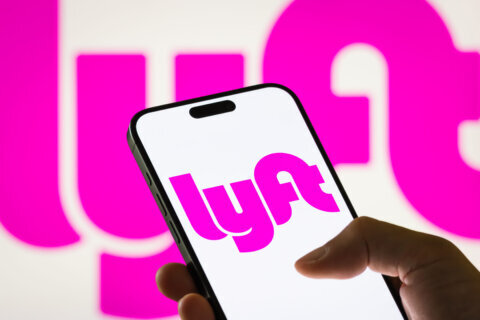New technology being installed at express lanes in the D.C. area can help determine if your E-ZPass setting matches the number of people you say is inside your vehicle when you’re using HOV lanes.
Cameras on the Interstate 495, Interstate 95 and Interstate 395 express lanes will be able to see in your car, NBC Washington first reported.
Currently, the cameras are at a point on the 95 Express Lanes, but they will soon cover the entire express lanes corridor over the coming weeks and months, Mike McGurk, a spokesman for express lanes operator Transurban, said.
The roadside camera technology identifies cars traveling on the lanes with an E-ZPass Flex set to HOV ON and verifies that there are at least three people present, a news release from Transurban said.
The cameras use image classification: Imagine standing on a sidewalk and looking at a car right next you, McGurk said.
The technology can determine “the shape of a person in a seat compared to the shape of just an empty seat,” McGurk said.
The image also goes through a layer of human review before a driver is notified.
“We take an educate first approach. We say, ‘Hey, we think you might be using your E-ZPass Flex incorrectly. Here’s a reminder it should only be set to HOV ON when you have those three people in the car.’ And we give them a chance to change that behavior,” he said.
And if drivers do it again, then they get charged the toll for that trip.
“The most important thing for any customers or users of the express lanes is, if you have that E-ZPass Flex, just make sure it’s in the right setting before you get on the lanes,” McGurk said.
Drivers in Northern Virginia with E-ZPass Flex can use the express lanes for free if they set the device to HOV ON and there are three or more people in their vehicle.
Express lanes use dynamic tolling, so when there is more traffic, the tolls are higher. Drivers following the rules could actually be hurt by those who are using that E-ZPass Flex incorrectly to HOV ON when there are actually fewer than three people in the vehicle, McGurk said.
“Toll prices and traffic on the Express Lanes are correlated, so HOV violations are fundamentally unfair to customers who are paying their toll,” Emeka Moneme, vice president of corporate strategy and innovation for Transurban North America, said in a statement.
For the system to work correctly, and for drivers to get the best experience, “We need people to follow the rules,” McGurk said.
McGurk said the images are encrypted, stored on secure servers, and there’s a limited number of personnel involved in the program and looking at the pictures.
“And after the images are verified … there’s a permanent redaction that’s put over the image itself so that you can’t distinguish the individuals in it.”
Virginia State Police, which have been responsible for enforcing the lanes, will continue to play a role, in addition to the cameras.
“We hope this, at the end of the day, benefits the customers by making sure everyone follows the rules,” McGurk said.
WTOP’s Mike Murillo contributed to this report.








